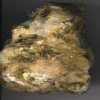JNewell
Member
Puzzled... ...assume someone can help...am very new to casting.
...assume someone can help...am very new to casting.
I melted some lead sheet scrap in my lead pot. As it got hot, an odd yellow/gold crust floated up on top. It looks almost like pyrite (fool's gold). It's a substantial volume of metal...seems to have a fair amount of lead still included, since it's pretty heavy. I did flux the pot. It doesn't want to stir back into the lead.
What is this stuff?
Can I/should I get it re-mixed back in with the lead? The bullets are destined for plinking in a Ruger Old Army so I am not very particular about hardness...just want something I can cast with and not to lose ~33% of the metal I start with.
I melted some lead sheet scrap in my lead pot. As it got hot, an odd yellow/gold crust floated up on top. It looks almost like pyrite (fool's gold). It's a substantial volume of metal...seems to have a fair amount of lead still included, since it's pretty heavy. I did flux the pot. It doesn't want to stir back into the lead.
What is this stuff?
Can I/should I get it re-mixed back in with the lead? The bullets are destined for plinking in a Ruger Old Army so I am not very particular about hardness...just want something I can cast with and not to lose ~33% of the metal I start with.


